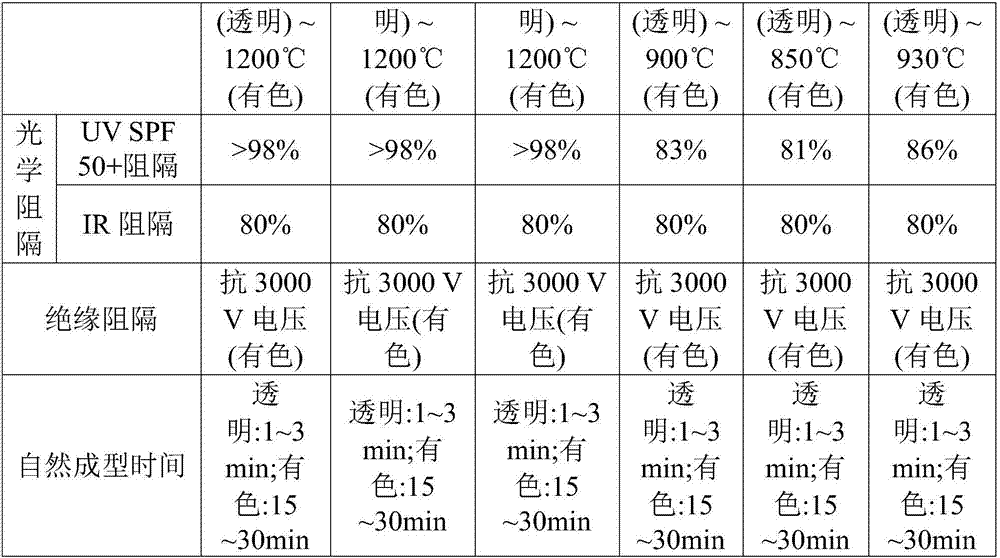Nanometer material and preparation method and application thereof
A nanometer and raw material technology, applied in the field of nanomaterials and its preparation, can solve the problems of insufficient matching of efficiency and space requirements, and achieve the effects of low production cost, efficient heat dissipation, and high thermal conductivity
- Summary
- Abstract
- Description
- Claims
- Application Information
AI Technical Summary
Problems solved by technology
Method used
Image
Examples
preparation example Construction
[0022] Preferably, the preparation method of the water-based epoxy modified resin comprises the following steps: adding a monomer and an initiator to the epoxy resin E-51, and reacting at 72-80°C for 7-8 hours to obtain a modified water-based epoxy resin; wherein , the monomer is α-methacrylic acid, the initiator is potassium persulfate, and the mass ratio of epoxy resin, monomer and initiator is (220-250):100:(1.5-1.8).
[0023] Preferably, the raw material components of the diamond-like carbon compound include, in parts by weight, 40-45 parts by weight of carbon, 15-18 parts by weight of silicon and 22-25 parts by weight of germanium.
[0024] Preferably, the raw material components of the silicon-based compound, in parts by weight, include: 10-15 parts by weight of silicon carbonate, 20-30 parts by weight of potassium silicate, 16-20 parts by weight of silicon carbide and 8-10 parts by weight of silicon nitride .
[0025] Preferably, the raw material components of the solv...
Embodiment 1
[0030] This embodiment provides a nanometer material, the raw material components are calculated by weight, including: 40 parts by weight of polymer resin, 30 parts by weight of solvent, 10 parts by weight of titanium dioxide, 8 parts by weight of silicon dioxide, and 15 parts by weight of silicon-based compound and diamond-like carbon compound 25 parts by weight;
[0031]Among them, the raw material components of the polymer resin include 15 parts by weight of acrylate silicone, 30 parts by weight of water-based epoxy modified resin, 5 parts by weight of polyvinyl chloride resin, trihydroxymethylpropane trimethacrylic acid 4 parts by weight of ester and 7 parts by weight of 2-lauryl acrylate; acrylate silicone is made of methyl methacrylate (acrylic acid monomer), vinyl-terminated polydimethylsiloxane (functional group polysilicon oxane), vinyltrimethoxysilane (organosilicon monomer) obtained by emulsion polymerization with a mass ratio of 25:12:1; the preparation method of w...
Embodiment 2
[0038] This embodiment provides a nanometer material, the raw material components are calculated by weight, including: 50 parts by weight of polymer resin, 25 parts by weight of solvent, 12 parts by weight of titanium dioxide, 6 parts by weight of silicon dioxide, and 20 parts by weight of silicon-based compound and 20 parts by weight of diamond-like carbon compound;
[0039] Among them, the raw material components of the polymer resin include 20 parts by weight of acrylate silicone, 20 parts by weight of water-based epoxy modified resin, 10 parts by weight of polyvinyl chloride resin, trimethylolpropane trimethacrylic acid 2 parts by weight of ester and 9 parts by weight of 2-lauryl acrylate; acrylate silicone is made of methyl methacrylate (acrylic acid monomer), vinyl-terminated polydimethylsiloxane (functional group polysilicon) oxane), vinyltrimethoxysilane (organosilicon monomer) are obtained by emulsion polymerization with a mass ratio of 30:15:1; the preparation method...
PUM
| Property | Measurement | Unit |
|---|---|---|
| thickness | aaaaa | aaaaa |
| thickness | aaaaa | aaaaa |
| degree of polymerization | aaaaa | aaaaa |
Abstract
Description
Claims
Application Information
 Login to View More
Login to View More - Generate Ideas
- Intellectual Property
- Life Sciences
- Materials
- Tech Scout
- Unparalleled Data Quality
- Higher Quality Content
- 60% Fewer Hallucinations
Browse by: Latest US Patents, China's latest patents, Technical Efficacy Thesaurus, Application Domain, Technology Topic, Popular Technical Reports.
© 2025 PatSnap. All rights reserved.Legal|Privacy policy|Modern Slavery Act Transparency Statement|Sitemap|About US| Contact US: help@patsnap.com



